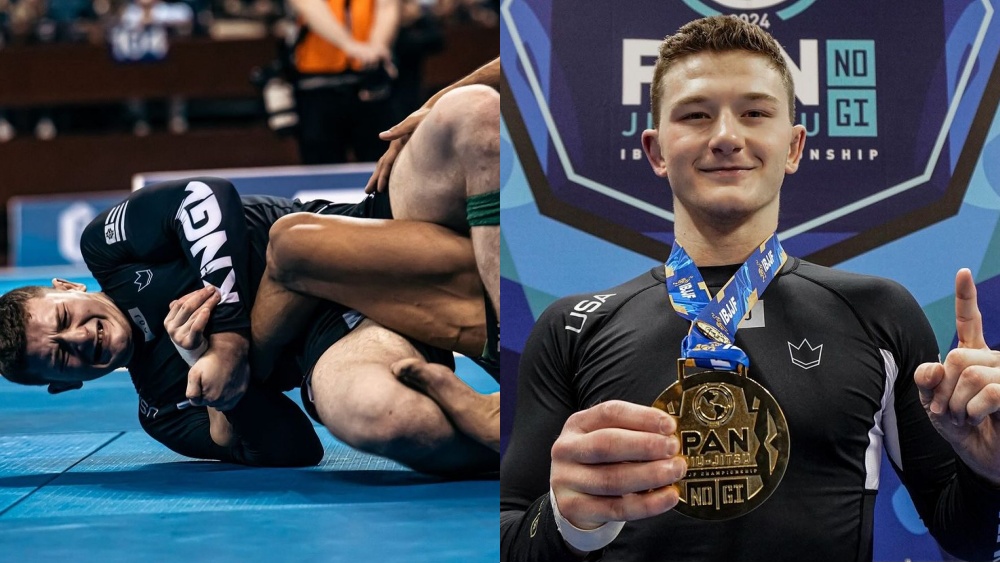There are many ways to submit an opponent in Brazilian Jiu-Jitsu. Depending on your position relative to your opponent’s, the most common attacks you can do involve attacking the arms, legs, and neck. We typically attack the arms and legs by hyperextending the joints using submissions like the armbar, kimura, and various footlocks.
The neck, on the other hand, is an entirely different thing. Neck attacks aim to either attack the spine or strangle the opponent. Today we’ll talk about a powerful yet underutilized technique known as the short choke.
Benefits Of Attacking The Neck
Attacking the neck is always a good idea because even a slight threat of submission will warrant a reaction from your opponent. The neck is extremely vulnerable when exposed. You can easily put a person out if you successfully block the passage of blood or oxygen. As previously mentioned, you can also use spine manipulations to attack the head and neck, but that’s for another discussion.
Generally, you can choke someone out by using blood or air chokes. To define, air chokes target the windpipe to restrict the uptake of oxygen to the head. It is usually the more painful approach as you put direct pressure on the front of the neck.
Blood chokes are strangling techniques that target the sides of the neck. The main objective of blood chokes is to block the passage of blood to the head. This can obviously cause pain. It can also render even the most challenging adversaries unconscious if left unprotected. The short choke can be both depending on the angle, but it typically targets the front of the neck.
This video by Stephan Kesting and Ritchie Yip perfectly explains the difference between the two types of chokes. Stephan mentions that the blood choke is perhaps a little better because it can work without causing many injuries.
Air chokes might be a little rougher comparatively speaking, but there’s no reason why we shouldn’t learn it. All that matters is having multiple tools from different positions so you can attack your opponent relentlessly. If you can keep them on the back foot, you should be able to dominate the match convincingly.
What Is The Short Choke
The short choke is an alternative technique to the rear-naked choke (RNC), using almost the same arm configuration to force the submission. Instead of going for the deep grip like in the RNC, all you have to do is to place your forearm across the neck.
The support arm is configured in such a way that you use a palm-to-palm grip as you drive your forearm and elbow behind the opponent’s back to put more power on the choking arm. What makes it such a viable move is that it is very easy to set up and has a lot of fight-ending potential once fully locked in.
While most people gravitate towards the rear-naked choke as their first option as it has more potential to put someone out, the short choke is also an excellent technique and can be very effective when applied properly.
How To Perform The Short Choke
In this video, MMA veteran Jeremy Horn explains a simple yet effective tactic to get the short choke. We have already discussed that the short choke is a viable alternative to the rear-naked choke, and this video explains why.
A common response to the RNC is to remove the top arm. Removing the top arm severely limits the attacker’s ability to finish the choke. Jeremy suggests using this defense to your advantage by sliding your arm so that it clears the opponent’s shoulder and transitioning to the palm-to-palm grip while driving your forearm against their back. Doing this sets up the short choke. Since your choking arm is still placed against the neck, all you have to worry about is changing your grips, and you should be all set.
This is a great option because the transition feels natural, and many grapplers are honestly not used to defending it. If you cannot establish the palm-to-palm grip, you can always go back to the seatbelt grip and restart your back attack.
Now we know how to enter the short choke from the top arm defense. Others may prefer to defend the choke by peeling off the attacking arm. This video by Gustavo Gasperin shows a nice transition to the short choke as your opponent fights to remove your arm against their neck.
As soon as your opponent pulls your choking arm down, you can transition to the short choke. Start by securing a palm-to-palm grip and move to clear the shoulder by slightly adjusting the angle of your wrist and arm.
Like in the other video, the goal is for you to use your forearm against the back as you remove the slack on your choking arm. You can finish with the short choke of course, but you can also transition to the rear-naked choke if you see any clearance; just be mindful of your opponent’s hands as they might grab your arms as you switch techniques.
Conclusion
The short choke is just one of the many submissions you can do from the back position. Please talk to your coach if you are interested in learning this technique, and don’t forget to focus on all the steps we lined out in this article.
The key to a strong back game is limiting your opponent’s options for as long as possible. Make sure you establish good control by using your hooks or body triangle to deny them from moving from side to side. Isolate their arm to control their body further and attempt your submissions.
Don’t forget that you can always switch up your techniques depending on what they give you. If you want to finish the match with a choke, we suggest starting with the RNC as your first option and then transitioning to other submissions like the short choke if you need to switch your grips.
You may also like:
















